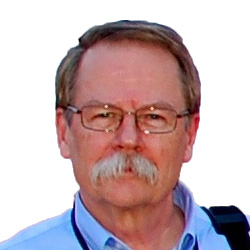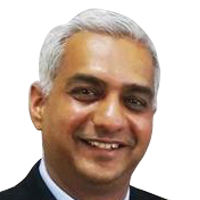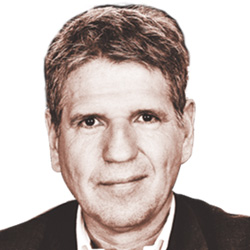Construction & Engineering
Infrastructure development has been a vital component in increasing a country's economic growth. Developing infrastructure enhances the efficiency of production, transportation, and communication, as well as help in providing economic incentives to public and private sector stakeholders.
Developing economies around the world are facing the daunting task of creating new transportation, communication, water, and energy networks to facilitate rapid urbanization and population growth. While the other parts of the world, advanced industrial economies like the United States and Western Europe, are focusing on repair and replacement of aging infrastructures.
The tremendous growth projected in future of construction sector requires innovation and adoption of technology that can empower AEC firms and project owners to focus not only on what to design and build, but also better understand where and why, helping them to deliver more sustainable and resilient infrastructure through more economical, social, and environmentally responsible practices.
Construction & Engineering program at Geospatial World Forum 2019 will discuss how geospatial technology improves collaboration, efficiency and performance in planning and design phase, during construction, in post-build savings and for ongoing operational management of a construction project. Some of the topics include BIM, reality capture, construction monitoring, locating underground utilities, project visualization in context, digital as-builts, facilities management, full lifecycle modeling, etc.
Participate in our Research Study!
Geospatial Media and Communications will release a report on the ‘Geospatial Market in the AEC Industry’ in the Construction & Engineering Session at Geospatial World Forum 2019.
Tell us what is the expenditure being made in geospatial technology and solutions in the AEC industry and how much of it goes in Transport, Industrial and Building. Our report will tell you, the market size, the key role of geospatial technologies and its integration with BIM, market map of geospatial companies across the construction value chain, and challenges, and benefits of adopting geospatial technologies. Fill the survey today!
Speakers

LINK Arkitektur
Norway

Hexagon
Switzerland

Between the Poles
Canada

Trimble
USA

Dura Vermeer
The Netherlands

VDCbase
The Netherlands

Mott MacDonald
United Kingdom

Bentley Systems
The Netherlands

Topcon Positioning Group
The Netherlands

Tensing
The Netherlands

Royal HaskoningDHV
The Netherlands

Jacqueline Meerkerk Director
BIM Loket
The Netherlands

3D Geoinformation, TU Delft
The Netherlands

Enzyme APD
Hong Kong

Laser Scanning Architecture
Germany

WSP Game Studio
Finland

National Survey Authority
Sultanate of Oman


Royal HaskoningDHV
The Netherlands

Ballast Nedam
The Netherlands

Ministry of Economic Affairs and Communications
Estonia

Riegl
USA

Geoff Zeiss Principal
Between the Poles
Canada

Fugro
The Netherlands

Ministry of the Interior and Kingdom Relations
The Netherlands

The Netherlands

Geodan
The Netherlands

Open Geospatial Consortium
Belgium

Roughan & O'Donovan
Ireland

Schiphol
The Netherlands
.jpg)
Thales UK
United Kingdom

Immergis
France

STRABAG
Germany

Hexagon
Sweden

L&T Construction
India

FARO
The Netherlands
SESSION THEMES
Sectors such as infrastructure, utilities, and oil and gas are substantial drivers for national economic growth. It is crucial for these sectors to continuously improve their efficiency and productivity for the benefits of the nation. Digitization of construction process will significantly reduce risks and enhance bankability of these assets, besides improving their viability and lifecycle. The session will feature keynotes from various construction and engineering stakeholders on the importance of geospatial technologies in digital construction and how practitioners can leverage additional values.

openBIM® extends the benefits of BIM (Building Information Modeling) processes through digital workflows that are vendor-neutral. At its core, openBIM is a collaborative process based on open standards, supported by digital technology for the whole-life of the built asset environment. openBIM enhances digital ways of working by improving collaboration for better project delivery and better asset performance. Find out from real-world projects the benefits of digital workflows through common standards to deliver more value to project delivery and asset performance.
With the rising disaster and climate risk globally, ‘resilient design’ has been a hot topic of conversation amongst architects, designers, engineers and planners alike. Designing resilient and environmentally-friendly buildings and structures is becoming a necessity, especially when it comes to large-scale structures with major consumption of energy. Geospatial technologies allow architects to not only preserve the environment but improve it. This is made possible by placing geospatial information at the center of infrastructure projects. The session will feature talks from experts on how to plan and design assets in relation to the surrounding ecosystem.

Intensive use of space imply responsibility for proper planning, efficient and sustainable use of resources and for safeguarding the environment both in environmental ways as related to social aspects. The underground has become an occupied space by itself through extensive underground infrastructural works from utilities to traffic tunnels and subsurface building constructions. As well as these man-made constructions the information on physical conditions represented by soil and geology are key in many processes from exploration to construction to flood- and disaster management. Collection of information on underground features is a regular activity and many maps and databases exist. Lately, worldwide initiatives arise where integrated digital information platforms are established to combine different types of underground information. Integrated standards are being developed, as for instance in the OGC-MUDDI project, linking already established standards like the CityGML Utility Network ADE for integrated utility information, Inspire Utility Networks, LandInfra, PipeLineML and many others. So datafication of the underground is widespread. Digital representations of the underground provide digital twins that act as integrated information resources in planning, analysing, monitoring and maintenance use cases.
Stakeholders from several backgrounds like government, research, engineering and data scientists are involved in the process. Each with different viewpoints on challenges and requirements, solutions and strategies.
The session addresses and combines several principal viewpoints:
» data requirements related to use cases
» data providers, organisation and business cases
» standardisation
» public private partnerships
» legislation
» international cooperation
The workshop includes a presentation session and concludes with a panel of combined experts that will be challenged to provide vision and vigour regarding future steps to take.
With the advent of wearables, smartphones, tablets, drones and the Internet of Things, construction workers and even the machinery are constantly collecting data at the job site. These real-time job site data will become even more powerful and enabling when integrated with external data such as weather, traffic, and business/community activities. Such influx of data (including data from previous projects) is providing an opportunity for construction businesses to optimize productivity and processes from the planning and design phase, during the construction, and if maintained properly, can be further leveraged for the operation and asset management phase as well. Listen to successful cases on how geospatial data is being integrated with big data from the construction sites that enable real-time monitoring and progress tracking of projects.
Digital twin is a concept of having a real-time digital representation of a physical object. The concept is made possible with the latest technological developments in sensors, miniaturization, robotics and drones, as well as computing power and smart algorithms. By combining the digital and physical, construction companies now can build cheaper, greener, and more durable buildings in a shorter timeframe. The session will feature use cases and benefits that digital twin technology can give to a construction project team, including the latest techniques available in reality capture, data processing and modeling.
It is predicted that by the year 2020, connectivity will become a standard feature of a building or infrastructure asset. The possibility of connecting virtually everything, from the simplest to the most complex object, offers remote control, monitoring and sensing capabilities to buildings and infrastructure operators. Integrating geospatial information and building information in a collaborative digital system allows asset operators to turn information into actionable insights. Successful case studies will be presented.
TARGET AUDIENCE
- Architecture Firms
- Building Operators
- Building Owners
- Construction Companies
- Consultants (Environmental/ Engineering/ Project Management)
- Engineering Companies
- Facilities Managers
- Geological Agencies
- Hardware and Software Vendors
- Infrastructure Operators
- National Geospatial Agencies
- Policy Makers
- Professional Bodies
- Project Owners
- Research Institutions & Academia
- SMEs/System Integrators








